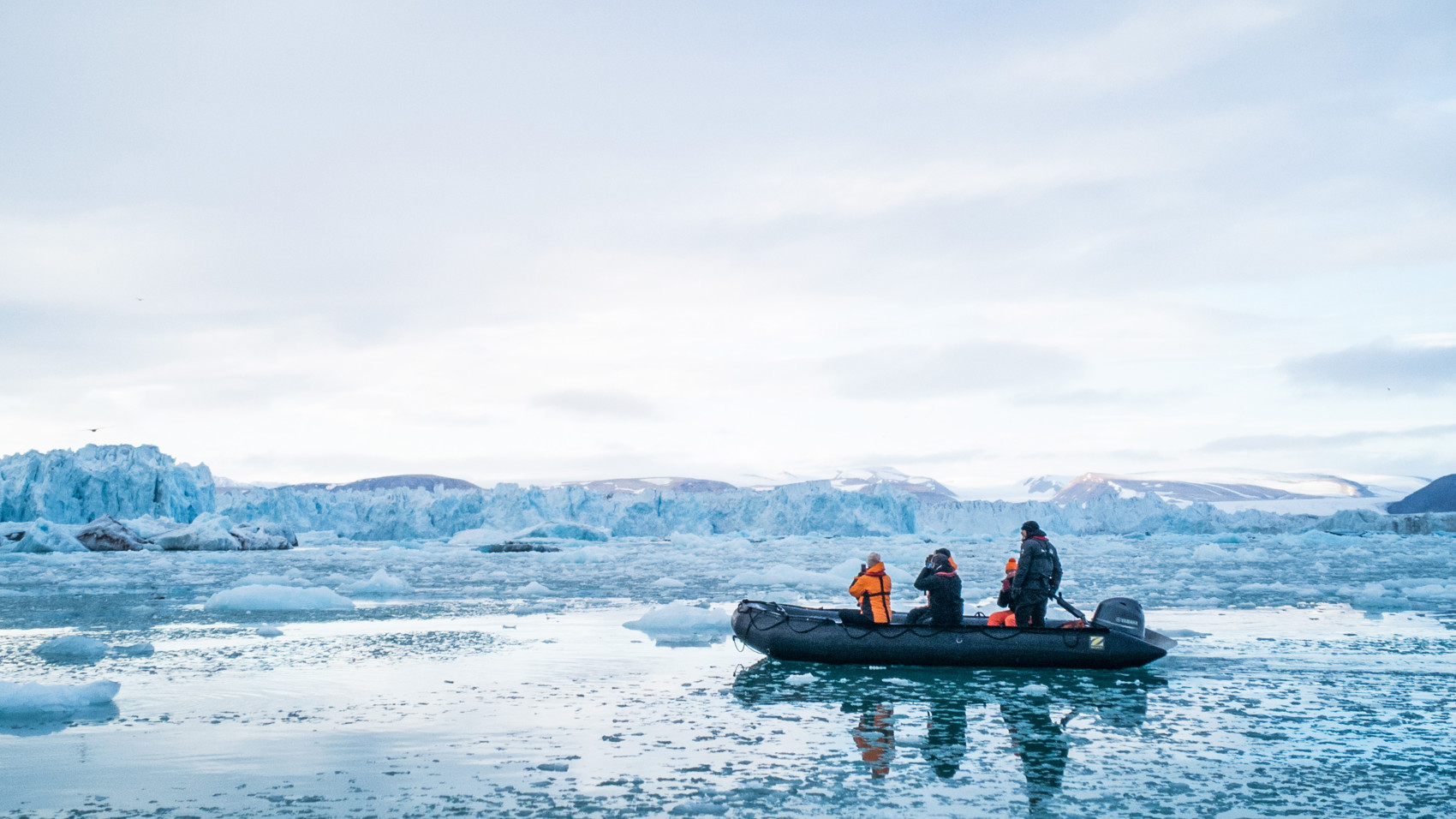This is one of the most common questions that we get from future polar travellers, and for us the answer is simple: each month has its own charm and beauty. The archipelago invites to extraordinary nature experiences throughout the season, from fairytale winter landscapes and fjord ice in May to incredible hiking opportunities and dramatic sunsets in September. Please remember that no Arctic season is exactly like the previous one. The following is however a general description of the months.


May - The magical springtime
Explore Svalbard in its purest form when springtime brings the archipelago to life. In fact, Svalbard in winter costume is so beautiful that you have to pinch yourself. The magical midnight sun has returned and now offer 24 hours of daylight until late August. It’s a unique experience to lean against the ship's railing in the middle of the night and enjoy the beauty of nature. In the beginning of the season the ground is often covered by a thick layer of snow, which can limit the hiking opportunities. In return there will be more time for Zodiac cruises.
• Arctic winter landscapes.
• Pastel-coloured skies and snow-covered mountains.
• The Arctic foxes and the reindeer still wear their winter furs.
• Great opportunities to see seals and polar bears on ice.
• For photographers the light can be amazing.
• Zociac cruises amongst fjord ice and ice formations.


June & July – The Arctic summer
Are you looking for the most unique summer adventure? Join us on a once-in-a-lifetime cruise through Svalbard’s untamed wilderness! The ice is slowly starting to loosen its grip, the bird cliffs are teeming with life and the tundra invites to longer hikes. The midnight sun reigns supreme and colourful flowers are in bloom. It’s usually a bit warmer than in May and the temperatures can reach 5-10 Degrees Celsius.
• As the ice has started to recede we can get further northeast.
• More snow-free areas become accessible for longer hikes.
• If we're lucky, we encounter the mighty pack ice.
• The birds have returned to their summer nests and the archipelago is teeming with life.
• Chance to see the spectacular waterfalls of the Austfonna ice cap.
• The Svalbard poppy and purple saxifrage decorate the slopes.


August & September – The dramatic late summer
The ice has usually receded at this time of the season, which offers good opportunities to reach further east. On land we can enjoy refreshing hikes, surrounded by breathtaking views. It is now that the snow free landscape with its magnificent geology is most visible, which creates a wonderful contrast to the glaciers. Whales are frequently seen in the waters and if you want to spot the giants of the sea, such as the humpback whale and blue whale, this is an ideal time to travel. In late August, the midnight sun is getting closer and closer to the horizon, preparing for the polar night giving us beautiful sunsets and a dramatic light.
• The ice thaws around the islands, which makes it possible to get further east.
• An ultimate time for whale watching.
• Great opportunities to reach Bråsvellbreen, a 45 kilometers long glacier front.
• From mid-August you may see the Ivory Gulls’ chicks, while some birds are preparing to migrate.
• Large colonies of walruses are more frequently seen.
• From the end of August, we can enjoy stunning sunsets.
• Offers a warm and soft light, perfect for anyone interested in photography.
Please note: Depending on the lens used for a photo or video shot an animal may appear to be closer than it is. We always follow strict wildlife guidelines to ensure that we do not cause any disturbance.

